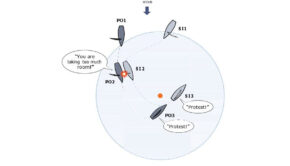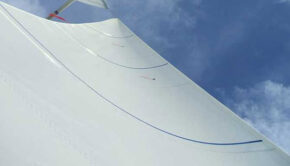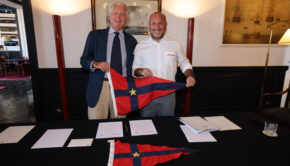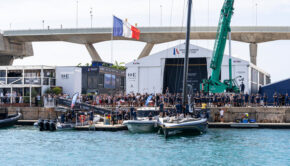Speed in the wind shadow
Published on October 14th, 2020
While boats have changed a lot in 25 years, the wind keeps blowing along like it always has. In this December 1995 report in Sailing World, (a younger) Ed Baird shares lessons learned from the 29th America’s Cup which still apply to how wind shadows impact fleet racing.
As coach for Team New Zealand, one of the most fascinating learning experiences I had resulted from research into the effects of disturbed air from another boat. As the rigs and hulls we use become more efficient, and as our boats become lighter and accelerate faster, bad air isn’t necessarily the race-ruining dilemma that you might think. In fact, there are times when disturbed air can actually help you!
The windward-leeward courses used in the America’s Cup put a premium on knowing where clear air is and how to keep it. In lighter conditions, the effect of another boat’s wind shadow can reach 8 to 10 boatlengths to leeward. Sailing in this zone of disturbed air is what the trailing boat wants to avoid, and what the leading boat wants to promote.
We all learn about the pain of wind shadows at an early stage of our racing careers. But deciding “when to hold and when to fold” can be the source of great argument on board. This past spring, I started with a clean sheet of paper and set out to re-map the effects of disturbed air, especially downwind in light conditions. To help settle the question of what to do the next time you find yourself in dirty air, consider some of the lessons we learned in the waters off San Diego. Full report.









 We’ll keep your information safe.
We’ll keep your information safe.